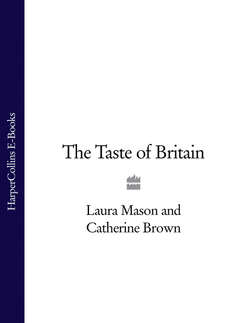Читать книгу The Taste of Britain - Hugh Fearnley-Whittingstall - Страница 99
HISTORY:
ОглавлениеThe first specific reference to hog’s pudding in the Oxford English Dictionary is from the early eighteenth century. However, the word hog (used in English to mean a bacon pig since at least the fourteenth century), combined with recipes including spices and currants in a savoury dish, suggests the tradition is far older, with roots in medieval practice. White puddings of cereal, spices and dried fruit were known in the 1500s, and were probably made throughout southern England. Much later, Flora Thompson (1939) describes how the country dwellers of Oxfordshire used the various parts of a pig when it was killed in the winter months - hog’s puddings bulked large.
Recipes varied; often they would have formerly included lights and spleen. Others emphasize the cereal content: a quotation from Hampshire (Wright, 1896-1905) describes it as ‘the entrail of a pig stuffed with pudding composed of flour, currants and spice’. A late Victorian recipe from Sussex describes hog’s puddings as small ball-like sausages, stuffed with pork, flour, spices and currants (White, 1932). Modern puddings have evolved from these heavily cereal-based, sweetish products. Although some containing fruit are still made, other examples are closer to a sausage, with groats (hulled, crushed cereal grains), lean pork and savoury spices, especially black pepper. In the past, they were used for any meal but now tend to be served at breakfast. The customary method of reheating was in simmering water, but they can be baked, fried or grilled.
